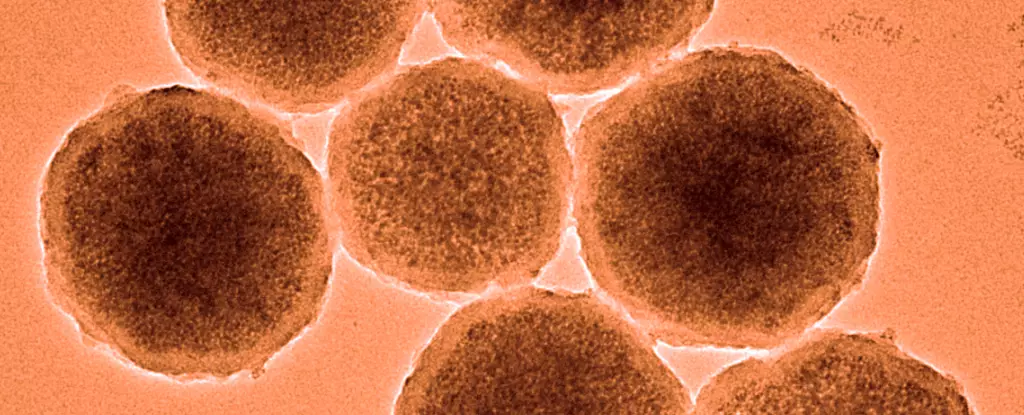In recent years, the field of nanotechnology has made significant strides, especially in medical applications. Among the most exhilarating advancements is the development of spherical nanobots, which are designed to operate within the vascular system to address critical health challenges, particularly brain aneurysms. A collaboration between clinical experts from Shanghai Jiao Tong University and the University of Edinburgh has yielded remarkable results in employing these nanobots to deliver clotting agents directly to vulnerable areas of the brain. If successful, this innovation could potentially save countless lives globally each year.
Each nanobot is a mere 300 nanometers in diameter, comparable to the size of some viruses. These tiny constructs feature a magnetite core surrounded by thrombin, a clotting agent essential for preventing hemorrhagic events. To protect the sensitive payload and ensure precise delivery, they are encased in a specialized shell that melts at a temperature just above the human body’s normal range. By utilizing a carefully controlled magnetic field, healthcare professionals can navigate these bots through the intricate networks of blood vessels with remarkable precision.
The remarkable efficiency of this technology lies in its ability to respond instantaneously to external magnetic signals. When directed to their target, the bots can be activated by a rapidly alternating magnetic field, releasing their clotting agent right where it’s needed most. This could revolutionize emergency responses to aneurysms, which often result in life-threatening conditions such as ischemic strokes.
The effectiveness of these nanobots has been subject to rigorous testing, demonstrating their ability to navigate within a test animal’s vascular system without causing inflammation or other adverse effects. By injecting a solution of these nanobots into the carotid artery and guiding them to model aneurysms, researchers found that the nanobots successfully delivered their medicative charge without any detrimental side effects. This not only proves the practicality of the technology but also enhances its credibility as a viable treatment option in clinical settings.
Implications for Neurology
Aneurysms are a pervasive health issue affecting approximately 3% of the global population. Although not all of them will rupture, the risk remains substantial, often resulting in dire consequences such as severe disability or death. Traditional treatments typically involve invasive surgical procedures, which carry their own set of risks and complications. The emergence of nanobot technology stands to shift the paradigm towards less invasive solutions, facilitating greater accuracy in treatment without the complications of conventional methods.
By acting as a non-invasive alternative to traditional procedures, this innovative approach may help avoid the complications associated with the rejection of surgical clips or the risks of bypassing blood vessels. The ability to precisely deliver treatments using nanotechnology could transform not only how we approach aneurysms but also other medical conditions requiring targeted drug delivery.
While the initial results are promising, there are still challenges to overcome before these nanobots can be used in human patients. The depth to which the magnetic fields can reach and the navicular capacity of the nanobots within complex vascular networks are areas that require further research and development. Achieving effective navigation through the body’s microvasculature is crucial to the success of this technology.
Nonetheless, as researchers continue to refine the nanobot design and optimize their delivery systems, the future of this technology in medicine appears bright. With ongoing trials and a commitment to scientific rigor, the potential for these microscopic paramedics to become a mainstay in medical treatments is on the horizon.
The introduction of magnetically-controlled nanobots holds immense promise for enhancing the management of brain aneurysms. By enabling precision in the delivery of clotting agents, they not only stand to reduce the risks associated with conventional treatments but also pave the way for innovative solutions to an array of medical challenges. As further studies and technological advancements unfold, the hope remains that these tiny devices will transform patient outcomes and usher in a new era of minimally invasive medical interventions.

